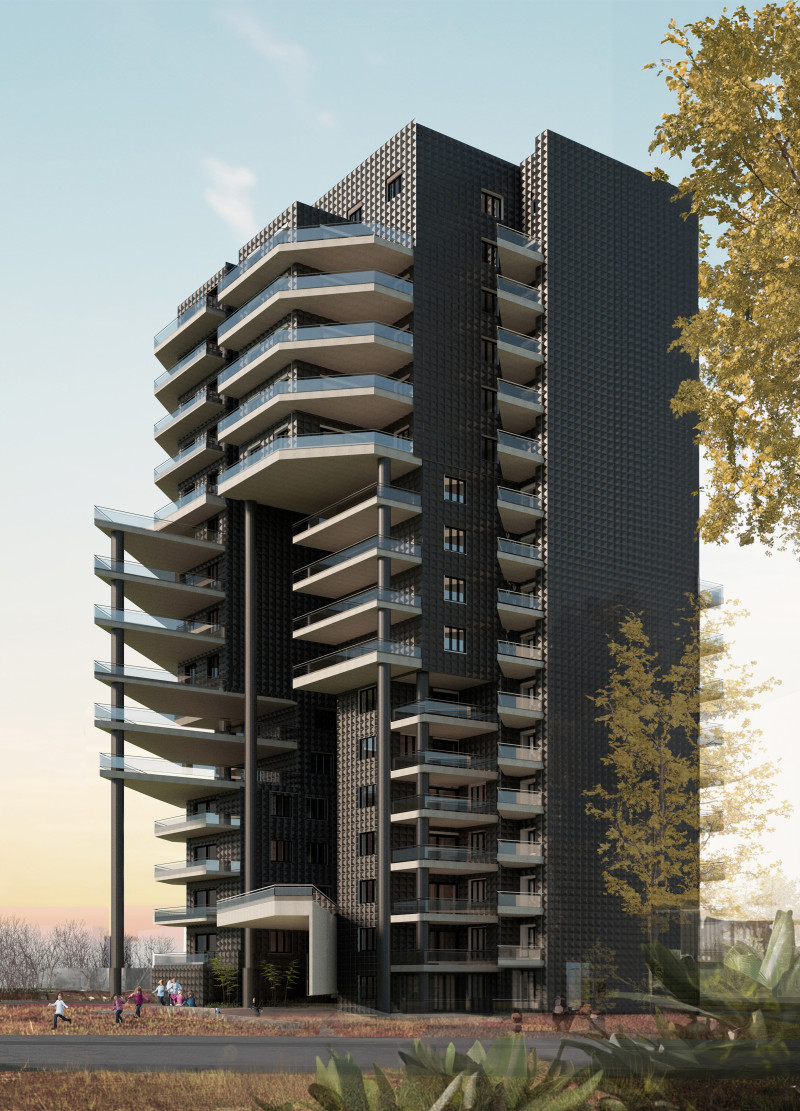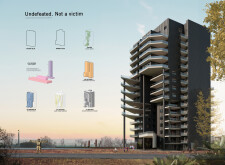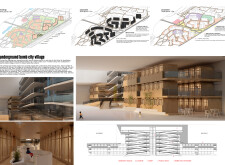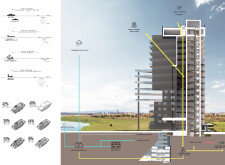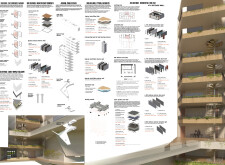5 key facts about this project
### Project Overview
The design initiative encompasses a series of innovative structures, titled "Undefeated. Not a victim," alongside an underground community village in Kharkiv, Ukraine. This project addresses the complex realities of resilience in wartime, with the intent to create safe living environments by integrating functionality, sustainability, and aesthetic considerations. Central to the project is an exploration of architectural strategies that mitigate the impacts of conflict on urban life.
### Architectural Strategies
The design incorporates a layered defense system, where each layer has a specific functional purpose aimed at enhancing safety and resilience. The primary structure features four distinct "defense" layers: the first serves as a deterrence to manage impacts through architectural form; the second includes balconies for structural relief and personal use; the third utilizes retrofitted concrete for stability; and the fourth employs advanced materials engineered to withstand severe impacts. These strategies not only provide physical protection but also foster a sense of community through well-conceived communal and private spaces.
### Material and Sustainability
A diverse palette of materials is employed to support both resilience and sustainability. Precast concrete forms the backbone of the structural components, providing enhanced durability, while glass facades increase natural light and create a visual connection between indoor and outdoor environments. The hybrid layered facades combine aesthetic appeal with functional resilience. Incorporating sustainable resources such as aeromine energy systems and solar panels further aligns the project with efficient energy use. Additionally, the integration of green elements within the design enhances both the aesthetic quality and psychological well-being of residents, reinforcing a commitment to biophilic design principles. These innovations reflect a proactive approach to resource management and environmental integration in urban warfare contexts.


